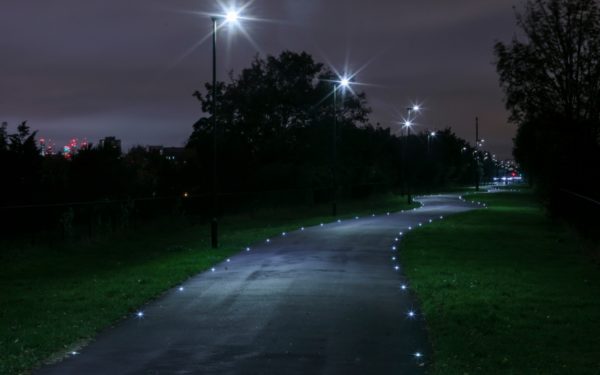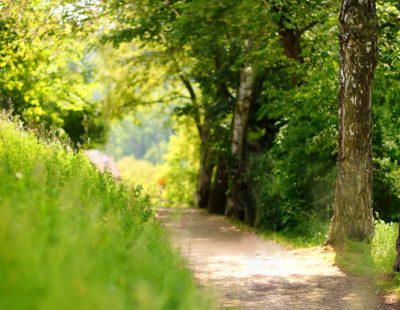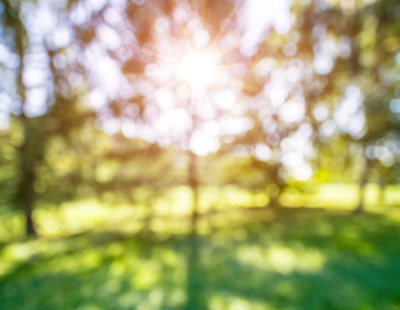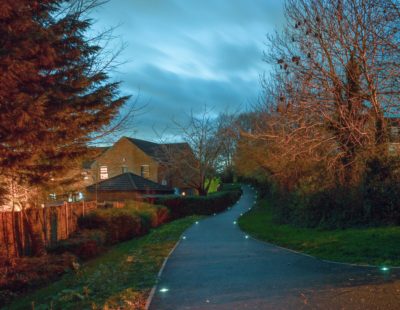Light pollution is a big problem, and year on year it’s getting worse – 6% worse, to be exact. Not only do 80% of people live under light polluted skies, but over 1/3 of humans can no longer see the Milky Way at all (source). Artificial light at night (ALAN) suppresses our melatonin secretion, disrupting our sleep and damaging physical and mental health. And that’s just humans. The impact of light pollution on nature and wildlife is far graver.
From altering migratory patterns and circadian rhythms, disturbing the feeding and mating behaviour of bats, to disrupting predator/prey relationships, the implications of irresponsible outdoor lighting are far reaching.
Solareye are an environmentally conscious manufacturer and supplier of high quality solar ground lights. We’re passionate about creating products that balance safety and security with ecological awareness. We shouldn’t have to damage local habitats in order to feel safe at night.
In this article, we talk you through some important ecological considerations to think through before lighting a pathway.
How does light pollution affect the environment?
Insects
Calling it an insect apocalypse might sound dramatic, but things aren’t looking good. Insect populations globally are declining at an alarming rate, and a loss of pollinators could have catastrophic consequences for entire ecosystems.
Around half of all insect species are nocturnal, and artificial light can attract them to their deaths, increase predation risk, and affect navigation. For insects like glow worms and fireflies, the low light they emit as a mating signal is obscured by artificial light, severely limiting reproductive success.
A loss of night-time pollen transfer can have a drastic impact on seed production, and many insects such as mayflies also use polarised light to help them find water to breed. And the tricky thing about ecosystems is we’re part of them too. Clearly, we need to find a way to make our lights safer for our insect friends, or all our lights will be turning off for good.
Bats
Most nocturnal animals are disturbed by artificial light, and bats are no different. Outdoor lighting can delay or prevent their emergence from their roosts, meaning they have less time to forage, and miss dusk where most insects are active – severely impacting their chances of survival. They are also more at risk of predation without the cover of darkness and can find navigation difficult.
Some species of bats are light averse, meaning they will avoid areas and commuting routes that are well lit, potentially losing out on feeding opportunities. And because insects are attracted to light, they leave the darker foraging grounds, creating a ‘vacuum effect’.
Plants
Plants respond to light, so it’s no surprise that artificial light like street lighting and car headlights can have severe implications for them. The main reason for this is that ALAN disrupts seasonal light cues, creating mismatches in timing with herbivores, altering crop growth, affecting flowering, decreasing time available for plant repair, and preventing nocturnal pollination.
What is Eco-Friendly Lighting? Everything You Need to Know >
How to manage artificial lighting at night
The best policy for outdoor lighting is to only use it when absolutely necessary. However, if you’re a local authority or business trying to create a welcoming, comfortable outdoor environment, often it is deemed necessary. So, how can you provide adequate lighting without harming nearby wildlife?
If you’re responsible for lighting an area, you should:
- – Consider the spatial arrangement of your lights to provide dark refuges and migratory corridors for wildlife like bats.
- – Limit light trespass by ensuring precise directionality of the outdoor light.
- – Not over illuminate.
- – Choose lights with a spectral composition that suits the ecological context of area.
- – Find ways to limit the impact of your lighting – see below!
How to reduce environmental impact of outdoor pathway lighting
Reduce upward light spillage
In conservation areas, choosing pathway lighting that is designed to limit upward light spillage can mitigate its impact. At Solareye, we wanted to create a light that wouldn’t give off unwanted light fields or affect bats in sensitive areas, so we designed the Bat Hat. This handy little hat reduces spillage by 98%, meaning pathways can be well lit with quality solar ground lights, minimising the impact of lighting on the environment.
Switch to solar
Speaking of solar, why not choose solar! Solar lights are totally powered by the sun, a renewable energy source, making them much more environmentally friendly than their fossil fuel powered counterparts. Solar energy generates no emissions, and they can be used in areas that are off-grid or difficult to wire.
Warm white solar LEDs
The great thing about LEDs is that there are a variety of correlated colour temperatures or CCTs which can be adjusted depending on their purpose and intended use. The International Dark Sky Association recommends using warm white or filtered LEDs in any outdoor lighting project in order to minimise the levels of blue light being emitted – read the rest of their advice here. This is because insects are more attracted to blue light and bats are attracted to insects. So, when lighting up a pathway, you should choose a spectral composition that has a colour temperature of ideally 3000k or less.
At Solareye, we’re always on the lookout for innovative ways to protect the environment whilst helping people enjoy outdoor leisure. That’s why we’ve added warm white solar LEDs to our colour range, making it easier than ever for you to light your pathway with the planet and its nocturnal creatures in mind.
Eco-friendly lighting solutions for pathways
Solareye have over 30 years’ experience in the traffic and pedestrian safety industry and have evolved into one of the UK’s leading suppliers of outdoor solar lighting. Our Solareye80 ground lights allow local authorities and businesses all over the country to provide night time delineation without having to worry about connecting the path to the National Grid, or regular maintenance. And none of this has to come at the expense of the local environment. With our nifty Bat Hat and warm white LEDs, we’re constantly taking steps to design and supply solar lighting that’s not just functional and high quality, but eco-friendly too!
Talk to us about your project today, or request a sample pack.
See more: The Ultimate Guide to Pathway Lighting





